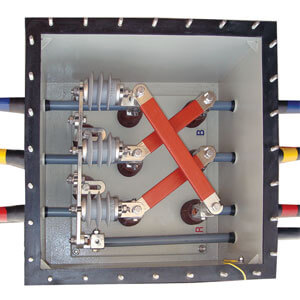Project Description
Link Box:
Given that high voltage cables are single-stranded, if they are long, link box is used to homogenize the shielded cables and create an identical voltage in them. In the link box, shielded cables are separately removed from the joint or they are connected to the earth or connected in a crisscross form to another single-stranded earth cable in order to prevent a rise in voltage in the earth cables.
Depending on the type of design, link boxes have lightning arresters with a special voltage. In addition, they are suitable for single-stranded and coaxial cables. Link boxes can be installed either under the ground (buried) or outdoors.
Earth Box:
In case you want to connect shielded cables directly to the earth or without a lighting arrester, or if you want to blind the shielded cables at a certain point, you should use a piece similar to a link box. However, if it is without a lightning arrester, you should use an earth box. An earth box is mostly used to connect shielded cables to the earth at the cable termination point. Earth boxes can be installed either under the ground (buried) or outdoors.
The main bill of materials of a link box or an earth box include:
- Stainless steel body
- 100% sealed lockable door
- Lightning arrester (if it is a link box)
- Resin or silicone insulator
- Cable input
- Sealed tubing
- Press (or screw connection) cable lug
- Tinned copper ingot
| Z = Required lightning arrester voltage (kV) Y= Type of cable (1- Single-core 2 – Coaxial) X = Number of input cables (3 or 6) |

LN Earth Box
| Code | Description |
| LNI – XY | Earth box for use under the ground (buried) |
| LNE- XY | Earth box for use outdoors |
For example: An earth box for use outdoors with three inputs and single-core cable LNE–31
LW Earth Box
| Code | Description |
| LWI – XY – Z | Link box for use under the ground (buried) |
| LWE- XY – Z | Link box for use outdoors |
For example: A buried link box with three coaxial input cables and 3kV lightning arrester LWI–32–3
